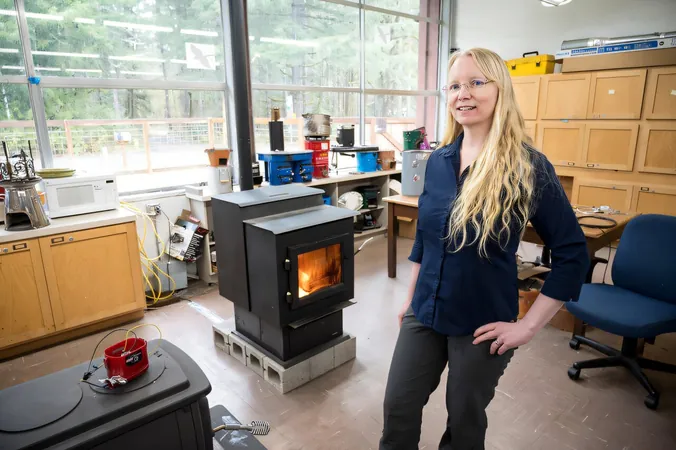
Revolutionizing Wood-Burning Stoves: Cutting Emissions by 95% with New Tech!
2025-06-06
Author: John Tan
Oregon State University is at the forefront of a breakthrough in wood-burning stove technology, aiming to drastically reduce emissions and improve air quality. Researchers have discovered advanced methods that could lead to a stunning 95% reduction in harmful particulate matter.
Wood-burning stoves contribute significantly to PM2.5 emissions in the U.S.—fine particulates that are infamous for their health risks, including heart disease and respiratory illness. Although not the most common heating method, these stoves rank as the third-largest source of particulate pollution, trailing only wildfire smoke and agricultural dust. According to Nordica MacCarty from the OSU College of Engineering, this poses a serious challenge to public health.
MacCarty emphasizes the need for clean burning of wood, a renewable and local energy source. "It's often overlooked that household wood stoves can severely impact community air quality. Just a few inefficient stoves can create unhealthy conditions for everyone nearby," she explains.
In her recent publication in the *Journal of the Air & Waste Management Association*, MacCarty reveals that most wood stove pollution occurs during two critical moments: lighting the fire and reloading it. This insight was achieved through a groundbreaking monitoring technique developed by her team, utilizing equipment installed in rural Oregon homes.
Despite the presence of around 10 million wood-burning stoves across America—many of which are antiquated models lacking modern improvements—the Environmental Protection Agency (EPA) reports that approximately 6.5 million are inefficient. These older stoves often resemble basic metal boxes, failing to utilize advanced combustion technologies, leading to both high emissions and a risk of dangerous chimney fires.
To tackle this, MacCarty's research group is innovating automated technologies that introduce precise jets of air into the fire, optimizing combustion efficiency. Prototypes have demonstrated impressive reductions in particulate emissions, showcasing a promising future for cleaner wood-burning options.
Regulatory changes from the EPA have played a critical role in spurring innovation. Since the 1980s, allowable PM2.5 emissions have been steadily lowered, demanding better designs from manufacturers. However, MacCarty notes that many stoves are certified based on controlled lab conditions, often leading to performance discrepancies when used in real homes.
This pioneering study, which includes contributions from Oregon State undergraduate Jonah Wald and collaboration with the Aprovecho Research Center, aims to address these issues by making it easier to gather relevant emissions data in actual use. Moreover, this initiative extends its impact far beyond the U.S., as it supports efforts to design efficient cook stoves for the 2.7 billion people globally who still rely on open fires for cooking—an endeavor geared towards a healthier and more sustainable future.




 Brasil (PT)
Brasil (PT)
 Canada (EN)
Canada (EN)
 Chile (ES)
Chile (ES)
 Česko (CS)
Česko (CS)
 대한민국 (KO)
대한민국 (KO)
 España (ES)
España (ES)
 France (FR)
France (FR)
 Hong Kong (EN)
Hong Kong (EN)
 Italia (IT)
Italia (IT)
 日本 (JA)
日本 (JA)
 Magyarország (HU)
Magyarország (HU)
 Norge (NO)
Norge (NO)
 Polska (PL)
Polska (PL)
 Schweiz (DE)
Schweiz (DE)
 Singapore (EN)
Singapore (EN)
 Sverige (SV)
Sverige (SV)
 Suomi (FI)
Suomi (FI)
 Türkiye (TR)
Türkiye (TR)
 الإمارات العربية المتحدة (AR)
الإمارات العربية المتحدة (AR)